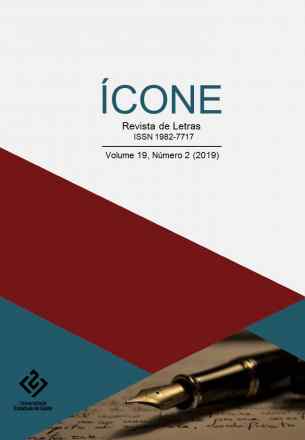UMA CASA DE OSSOS E PALAVRAS: NAEL E A ARQUITETURA DE UMA METÁFORA EM DOIS IRMÃOS, DE MILTON HATOUM
Ícone
UMA CASA DE OSSOS E PALAVRAS: NAEL E A ARQUITETURA DE UMA METÁFORA EM DOIS IRMÃOS, DE MILTON HATOUM
Autor Correspondente: Felipe Camargo Mello | [email protected]
Palavras-chave: Espaço, Milton Hatoum, Narrativa contemporânea brasileira.
Resumos Cadastrados
Resumo Português:
Este artigo propõe-se a discutir o modo como o romance Dois irmãos, de Milton Hatoum, promove uma representação do espaço narrativo da casa libanesa como uma metáfora na narrativa, projetando seus significados não apenas no processo de falência e derrocada da família, mas também da mediação entre o público do privado, o que significa dizer que desempenha a mediação entre o individual e o coletivo, especialmente no que tange a experiência subjetiva ligada à vivência nesses espaços. Para pensar esse aspecto do romance, problematiza-se a relação entre espacialidade e experiência subjetiva, uma vez que a casa liga-se a um núcleo identitário mais amplo. Diante disso, faz-se essencial uma abordagem que considere a criação de sentidos desses ambientes e como eles se atrelam às suas personagens e considerar Nael não apenas o narrador, mas um arquiteto que reconstrói a casa de Zana por uma divisão entre a sua pré-história, os relatos que apreendeu das conversas com Halim e Domigas, e a sua história, as próprias memórias de vivências dentro do seio familiar.
Resumo Inglês:
This paper aims to discuss the way with which the novel Dois irmãos, by Milton Hatoum, promotes a representation of the narrative space of the Lebanese house as a metaphor in the narrative, projecting their meanings not just in the bankruptcy process and family collapse, but also of the mediation between the public and private, which means telling that it acts as the mediator between the individual and the collective, especially in regard to the subjective experience connected to the experience in this spaces. In order to think this aspect of the novel, the relation between spatiality and subjective experience is problematized, since the house connects itself to a larger identity core. Thus, it becomes essential an approach that considers the creation of the meanings of these environments and how they hitch their characters and to consider Nael not just as the narrator, but also as an architect that rebuilds Zana’s home by a division between its prehistory, the story he learned through conversations with Halim and Domingas, and the history, Nael's own memories of the experience within the family.

